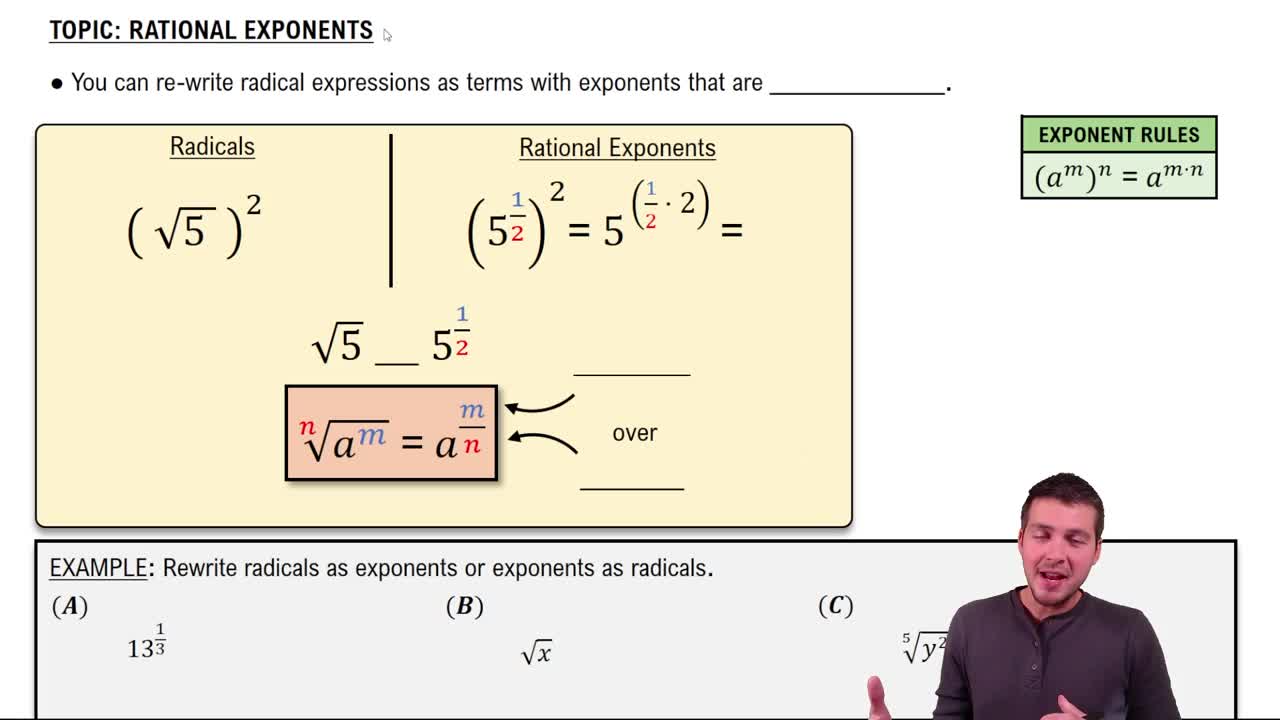Table of contents
- 0. Review of Algebra4h 16m
- 1. Equations & Inequalities3h 18m
- 2. Graphs of Equations43m
- 3. Functions2h 17m
- 4. Polynomial Functions1h 44m
- 5. Rational Functions1h 23m
- 6. Exponential & Logarithmic Functions2h 28m
- 7. Systems of Equations & Matrices4h 6m
- 8. Conic Sections2h 23m
- 9. Sequences, Series, & Induction1h 19m
- 10. Combinatorics & Probability1h 45m
4. Polynomial Functions
Zeros of Polynomial Functions
Problem 95
Textbook Question
Find all zeros of f(x) = x³ + 5x² – 8x + 2.
 Verified step by step guidance
Verified step by step guidance1
First, use the Rational Root Theorem to list all possible rational roots of the polynomial. The possible rational roots are the factors of the constant term (2) divided by the factors of the leading coefficient (1).
Test each possible rational root by substituting them into the polynomial \( f(x) = x^3 + 5x^2 - 8x + 2 \) to see if they yield zero.
If a rational root is found, use polynomial division (synthetic or long division) to divide the polynomial by \( x - \text{(found root)} \) to reduce the polynomial to a quadratic.
Solve the resulting quadratic equation using the quadratic formula \( x = \frac{-b \pm \sqrt{b^2 - 4ac}}{2a} \) to find the remaining roots.
Combine all found roots (rational and those from the quadratic) to list all zeros of the polynomial.
Recommended similar problem, with video answer:
 Verified Solution
Verified SolutionThis video solution was recommended by our tutors as helpful for the problem above
Video duration:
6mPlay a video:
Was this helpful?
Key Concepts
Here are the essential concepts you must grasp in order to answer the question correctly.
Polynomial Functions
A polynomial function is a mathematical expression involving a sum of powers in one or more variables multiplied by coefficients. In this case, f(x) = x³ + 5x² – 8x + 2 is a cubic polynomial, which means it has a degree of three. Understanding the structure of polynomial functions is essential for analyzing their behavior and finding their zeros.
Recommended video:

Introduction to Polynomial Functions
Finding Zeros
Finding the zeros of a polynomial function involves determining the values of x for which f(x) = 0. These values are also known as the roots of the polynomial. Techniques for finding zeros include factoring, using the Rational Root Theorem, synthetic division, and applying numerical methods or graphing to approximate solutions.
Recommended video:

Finding Zeros & Their Multiplicity
The Rational Root Theorem
The Rational Root Theorem provides a way to identify possible rational roots of a polynomial equation. It states that any rational solution, expressed as a fraction p/q, must have p as a factor of the constant term and q as a factor of the leading coefficient. This theorem is particularly useful for narrowing down potential candidates for zeros before testing them in the polynomial.
Recommended video:
Guided course

Rational Exponents
Related Videos
Related Practice


